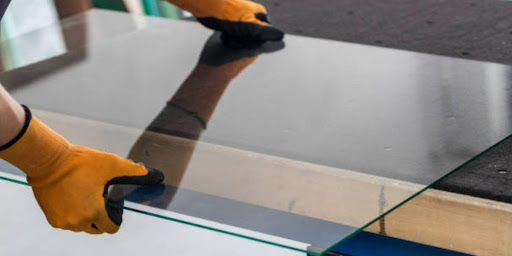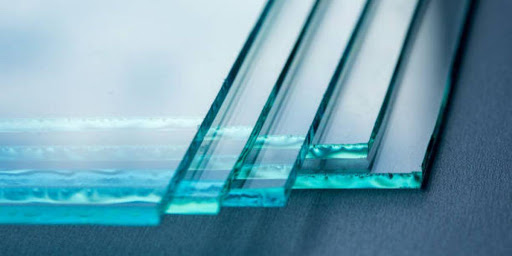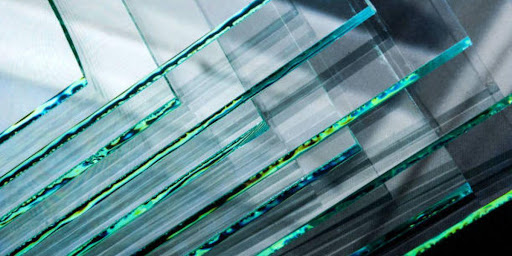Power Articles
Industry Elevating Content
Types of Glass for Windows

PowerArticles
Nov. 6, 2023
When it comes to selecting the right glass for windows, home improvement companies that install windows and doors must navigate a multitude of options. Choosing the appropriate type of glass is essential for enhancing energy efficiency, security, and overall comfort in a home. In this guide, we’ll explore the various types of glass available for windows, shedding light on their unique features and benefits, to help these companies make informed decisions and ensure their customers’ satisfaction.
Understanding Glass Types
When it comes to window construction, various types of glass are available to meet the diverse needs of homeowners. Understanding the different types of glass is crucial for home improvement companies. Some common glass types include float glass, tempered glass, laminated glass, and low-e glass. Each type has specific properties that make it suitable for different applications.
Common characteristics of glass:
Glass is a versatile material known for its transparency, allowing natural light to enter while providing a barrier against the elements. It is a non-crystalline solid with unique properties like brittleness, high optical clarity, and the ability to be cut, shaped, and molded into various forms. These characteristics play a significant role in window construction, making glass a vital component.
The importance of glass in window construction:
Glass plays a critical role in window construction, affecting not only a home’s aesthetic appeal but also its energy efficiency, security, and comfort. The type of glass used in windows can impact a property’s insulation, soundproofing, and UV protection. Home improvement companies must consider the right glass type to ensure customer satisfaction and the best outcome for the project.

Single Pane Glass
Single pane glass consists of a single sheet of glass without additional layers. It is a traditional and straightforward option for windows. Single pane glass is known for its simplicity and cost-effectiveness but lacks the insulation properties of more modern alternatives.
Pros and cons:
Pros of single pane glass include affordability and ease of installation. However, it has several drawbacks, including poor insulation, making it unsuitable for regions with extreme temperatures. It also provides limited soundproofing and offers minimal protection against UV rays.
Suitable applications:
Single-pane glass is ideal for situations where insulation and energy efficiency are not top priorities. It is commonly used in outbuildings, garages, and other non-living spaces where cost savings are essential.
Cost considerations:
Home improvement companies should be aware that single pane glass is generally the most budget-friendly option, making it attractive for customers looking to save on initial costs. However, its long-term energy costs may be higher due to reduced insulation.

Double Pane (Insulated) Glass
Double pane or insulated glass consists of two glass sheets separated by a spacer, creating a sealed space filled with air or gas. This design enhances insulation and energy efficiency, making it a popular choice for modern windows.
Advantages and disadvantages:
The advantages of double-pane glass include improved insulation, reduced energy consumption, and enhanced soundproofing. However, it is relatively more expensive than single-pane glass and may require professional installation.
Ideal uses:
Double pane glass is suitable for residential windows, as it enhances comfort and energy savings. It is especially beneficial in regions with varying temperatures, as it helps maintain a consistent indoor climate.
Cost factors:
Home improvement companies should inform customers that double-pane glass offers long-term savings on energy bills. While the initial cost may be higher, the improved insulation can lead to substantial financial benefits over time, making it a worthwhile investment for homeowners looking to enhance their living spaces.

Low-E (Low Emissivity) Glass
Low-E (Low Emissivity) glass is a type of window glass designed to minimize the amount of heat transfer through the glass while allowing light to pass through. It has a microscopically thin, transparent coating that reflects heat energy. This coating works by reducing the emissivity of the glass, which means it prevents the glass from radiating heat. This, in turn, helps maintain a comfortable temperature inside the building by blocking unwanted heat gain during hot summers and heat loss during cold winters.
Benefits of Low-E glass:
Low-E glass offers several advantages for homeowners. It enhances energy efficiency by reducing the need for heating and cooling, resulting in lower utility bills. Additionally, it provides increased comfort by reducing temperature fluctuations, preventing drafts, and minimizing the fading of interior furnishings due to ultraviolet (UV) rays. Low-E glass also aids in noise reduction and can improve the overall value of a property.
When to recommend Low-E glass:
Low-E glass is an excellent choice for homes in regions with extreme weather conditions, as it helps maintain a consistent indoor temperature. It’s especially recommended for areas with hot summers or cold winters. Homes with large windows or glass facades can benefit from Low-E glass to save on energy costs. It’s also a good option for homes where UV protection and glare reduction are priorities.
Cost considerations:
The initial cost of Low-E glass windows is higher than that of regular windows, but the long-term savings on energy bills can make it a cost-effective investment. Home improvement companies should educate customers about the potential return on investment and the overall benefits of Low-E glass. Factors affecting the cost include the type of Low-E coating and the window’s size and style. Customers should be encouraged to assess their specific needs and budget to make an informed decision.

Tempered Glass
Tempered glass is a safety glass that undergoes a special heat treatment process, making it significantly stronger than regular glass. When tempered glass breaks, it shatters into small, relatively harmless pieces rather than sharp, jagged shards. This makes it a safer option for various applications.
Advantages and disadvantages
The main advantage of tempered glass is its safety feature, as it reduces the risk of severe injuries in case of breakage. It’s also more resistant to thermal stress, making it suitable for areas with temperature fluctuations. However, tempered glass is more challenging to cut and cannot be altered once it’s tempered, which limits its use in certain situations. It’s not the best choice for applications where edge finishing is required.
Appropriate applications
Tempered glass is commonly used in areas where safety is a priority, such as shower enclosures, glass doors, and glass railings. It’s also used for automobile windows and some types of furniture. Home improvement companies should recommend tempered glass for locations where the risk of glass breakage is higher, and safety is a concern.
Cost implications
Tempered glass is generally more expensive than regular glass due to the additional manufacturing processes involved. Homeowners should be informed about the higher upfront cost and the long-term safety benefits of tempered glass. The cost will vary depending on the size, thickness, and specific application, so it’s essential to provide customized quotes based on the project requirements.
Laminated Glass
Laminated glass consists of two or more layers of glass sandwiched together with a layer of polyvinyl butyral (PVB) or ethylene-vinyl acetate (EVA) in between. This interlayer holds the glass layers together, even when broken, creating a strong and durable material. Laminated glass is known for its safety and security properties.
Advantages and disadvantages
The primary advantage of laminated glass is its safety and security features. When shattered, it remains intact, preventing shards from flying and offering protection against break-ins. It also provides excellent sound insulation and UV protection. However, it can be heavier and thicker than standard glass, limiting its use in certain architectural designs.
Common uses
Laminated glass is widely used in situations where safety, security, or noise reduction is crucial. Applications include windows in hurricane-prone regions, storefronts, skylights, and automotive windshields. It is also employed in museums and art galleries to protect valuable exhibits from UV radiation. Home improvement companies should recommend laminated glass for these specific purposes.
Cost analysis
Laminated glass is typically more expensive than standard glass due to the added manufacturing process and the use of specialized interlayers. The cost can vary based on factors like thickness, size, and the type of interlayer used. Homeowners should be educated about the increased upfront cost and the long-term benefits, especially in terms of safety and security. Providing detailed cost estimates for specific projects will help customers make informed decisions.

Conclusion
In conclusion, understanding the different types of glass for windows is crucial for home improvement companies that install windows and doors. By offering a variety of options, such as double-glazed, low-E, and tempered glass, they can provide their customers with solutions that improve energy efficiency, security, and overall comfort in their homes. Choosing the right type of glass not only enhances the aesthetic appeal of windows but also contributes to long-term savings and satisfaction for homeowners.
Published By
PowerArticles
Nov. 6, 2023